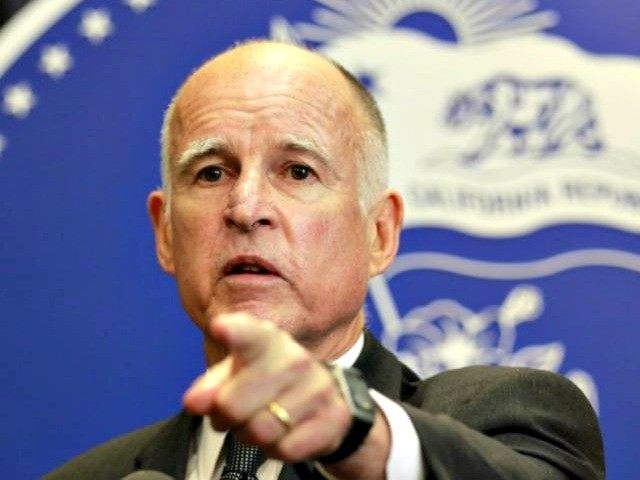California Gov. Jerry Brown issued an executive order Wednesday mandating a 25 percent cut in statewide water use, the first mandatory water restrictions in state history.
Brown issued the order from a brown, patchy perch in the Sierra Nevada mountains usually covered with snow at this time of year.
“Today we are standing on dry grass where there should be five feet of snow,” Brown said in a statement. “This historic drought demands unprecedented action. Therefore, I’m issuing an executive order mandating substantial water restrictions across our state. As Californians, we must pull together and save water in every way possible.”
This week, water content in the Sierra Nevada snowpack dipped to its lowest level in history, at just eight percent of average for this time of year. By April 1, the water level was at five percent.
“It’s a different world,” Brown said in issuing the order. “We have to act differently.”
According to the Los Angeles Times, the executive order will affect a substantial number of businesses and residences across the state. Restrictions will include limits on the amount of water used by golf courses, cemeteries and grass within state road medians, while 50 million square feet of lawn across the state will be replaced with drought-resistant alternatives.
Water agencies will reportedly be ordered to create new pricing models that penalize heavy water users, while new homes and developments in the state will be required to have more efficient drip irrigation systems installed for landscaping.
Meanwhile, the state will create a rebate program that allows residents to turn in old water-intensive appliances for new ones that use less water and energy.
All told, the state will be required to cut its water use by 25 percent this year, which Gov. Brown said amounts to a reduction of 1.5 million acre-feet of water. An acre-foot of water is equal to about 360,000 gallons.
“This is sort of uncharted territory,” Department of Water Resources spokesman Doug Carlson told the Times. “I can tell you what the [snowpack] reading will be tomorrow: Zero, as in Sierra Nada.”
Large rainstorms in December and February of this year gave California water agencies hope that the state could finally see some relief from the now four-year-long drought. The rain did manage to add to California’s largest reservoirs, like Lake Oroville and Lake Shasta, which saw modest gains in water levels over last year. However, unusually warm temperatures in March have devastated the already meager Sierra Nevada snowpack. According to new readings taken Wednesday, some parts of the mountain’s snowpack are at just two percent of average for this time of year.
Professor Michael Strobel, director of the National Water and Climate Center Program, told NBC News that April 1 is supposed to be the “peak” for the state’s snowpack levels.
“April 1st is kind of what we hang our hat on,” he told the outlet. “It’s a pretty dire situation.”
California had already begun implementing drought relief measures in March before Brown issued the executive order. On March 17, the State Water Resources Control Board issued new restrictions on water use, limiting the amount of times homeowners and urban water users could water their lawns. Additionally, Brown announced a $1 billion emergency drought relief package, with funds going toward drinking water protection, wildlife preservation, desalination projects, and, puzzlingly, flood control.

COMMENTS
Please let us know if you're having issues with commenting.